This Broken Skull River northern adventure story begins below the marquee lights, outside an 80-year-old downtown theater on a windy, snow-covered sidewalk. Awaiting a taxi, my 12-year-old son, Doug, asks me to guess his favorite film of the night. Often in this situation, I’ll make stupid guesses to prolong the game, killing time to distract Doug from the cold. But tonight, I took my best shot at it and named the high-adrenaline whitewater kayaking film. Nope. I pick the short, funny film of best kayaking fails. Nope. Oh, I know, the one about the quirky birchbark canoe builder? Doug likes building things. Nope.
Noatak: Return to the Arctic is an awarding-winning adventure film about Jim and Tip, two dudes in their 70s returning to the Noatak River, perhaps their last northern canoe trip after 40 summers spent on rivers together.
The Alaskan Brooks Range is spectacular, the cinematography superb and the men’s narrative on the power of exploration and coming of a certain age thoughtful. I screened this touching film dozens of times as part of the Paddling Film Festival World Tour. It was a contender for the People’s Choice Award. As unlikely as it seems, it is Doug’s favorite film.
“Can we do a northern canoe trip next summer?” Doug asked.
Before I’d had a chance to look at our summer schedules or make any calls, he’d shown a pre-screening copy of Noatak to his favorite 70-something-year-old dude, David Hamber—his grandad, my father-in-law.
Six months later, Doug and I find ourselves rendezvousing with David in Edmonton, Alberta, before our next leg to Norman Wells, home of Black Feather’s northern base and the airbase of North-Wright Airways.
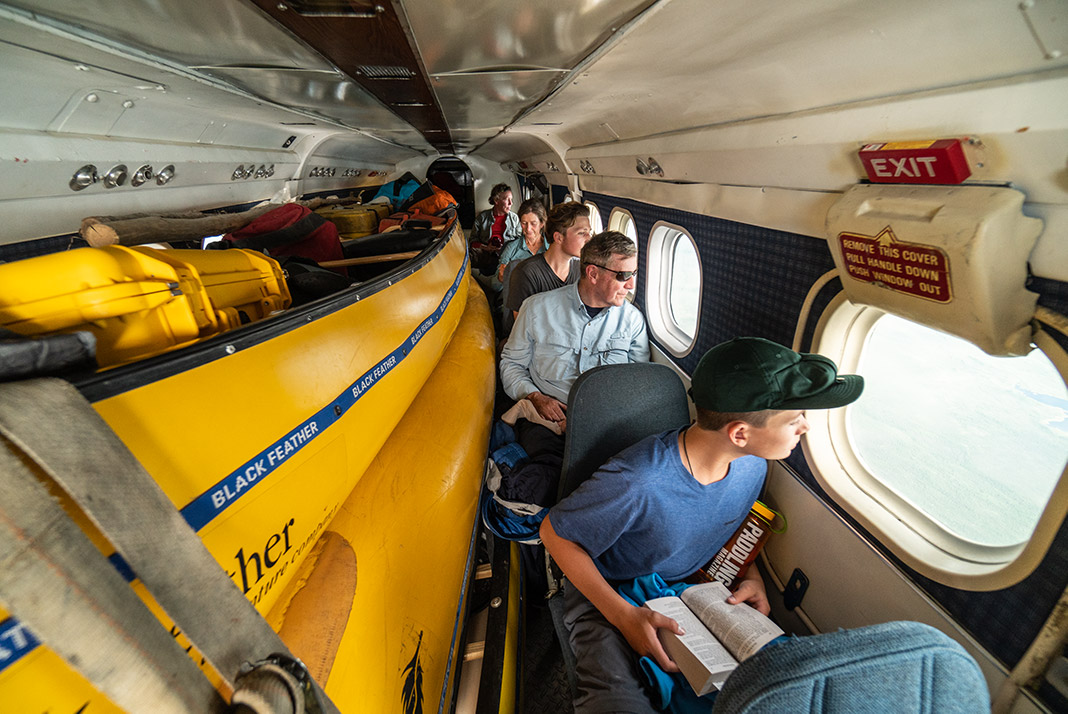
I’d just finished a grueling magazine deadline. Doug had two short rest and repack days after a month at summer camp. David Hamber is a retired insurance broker, hobby gardener and backyard putterer. He’d packed, repacked, double-checked everything on Black Feather’s recommended packing list—twice—and was ready weeks ago.
The criteria for choosing our northern river had checkboxes: less than two weeks, but longer than one to make the travel time worth it; whitewater, but not too hard, said my mother-in-law; hikes with mountain views; and pitching this to Paddling Magazine, I needed a river with a fresh story to tell.
And so, on the first day of August, from the oil pipeline town of Norman Wells, three generations of men and our group of strangers and Black Feather river guides flew to Divide Lake, the drop-off point for the seldom-traveled Broken Skull River flowing through the newly established Nááts’ihch’oh National Park Reserve in Northwest Territories.
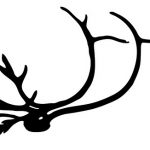
I knew of the Broken Skull River only because I’d been invited a few years earlier on an exploratory trip organized by then Parks Canada’s visitor experience team leader, Lyn Elliot. The crew included professional photographer-writer and regular Paddling Magazine contributor, Colin Field, and a who’s-who cast of top northern guides from companies operating on surrounding rivers in the Nahanni and Sahtu regions.
Elliot knew she needed accurate river beta and breathtaking photographs to create a new northern river tripping classic. She was only able to find one guy who’d paddled the Broken Skull, and that was in the early ‘90s, and it was his honeymoon—he likely had more important things on his mind.
According to Elliot’s official Parks Canada Broken Skull Trip Planner produced after this scouting trip, Mike Fischeser thought his matrimonial celebration was a first descent until a year later when he met a polio survivor who’d paddled it the year before.
The Trip Planner was produced in 2015, and the first guided clients experienced the Broken Skull River in the summer of 2016. Our group proudly counted themselves in the first 100 to have paddled the Broken Skull in modern times. Doug and his grandad being the youngest and the oldest.
In five short years, the Broken Skull has gone from a virtually unknown river flowing under the radar to a new northern gem, considered one of the best in the North.

Divide Lake is not the true headwaters of the Broken Skull River. Our trip begins here because it is the largest body of water farthest upstream that allows North-Wright’s de Havilland Twin Otter safe access. We set up camp on the pebbled shore of Divide Lake.
After a morning hike up a ridge and on-water strokes tune-up, we wade, line and paddle our canoes down Divide Lake Creek, aptly nicknamed Cold Feet Creek.
All of us are in drysuits with sewn-in feet and spend the afternoon jumping in and out of boats, nudging over gravel bars and floating when we can. It’s work, but good work. Teamwork. The kind of work that quickly brings family and strangers closer together.
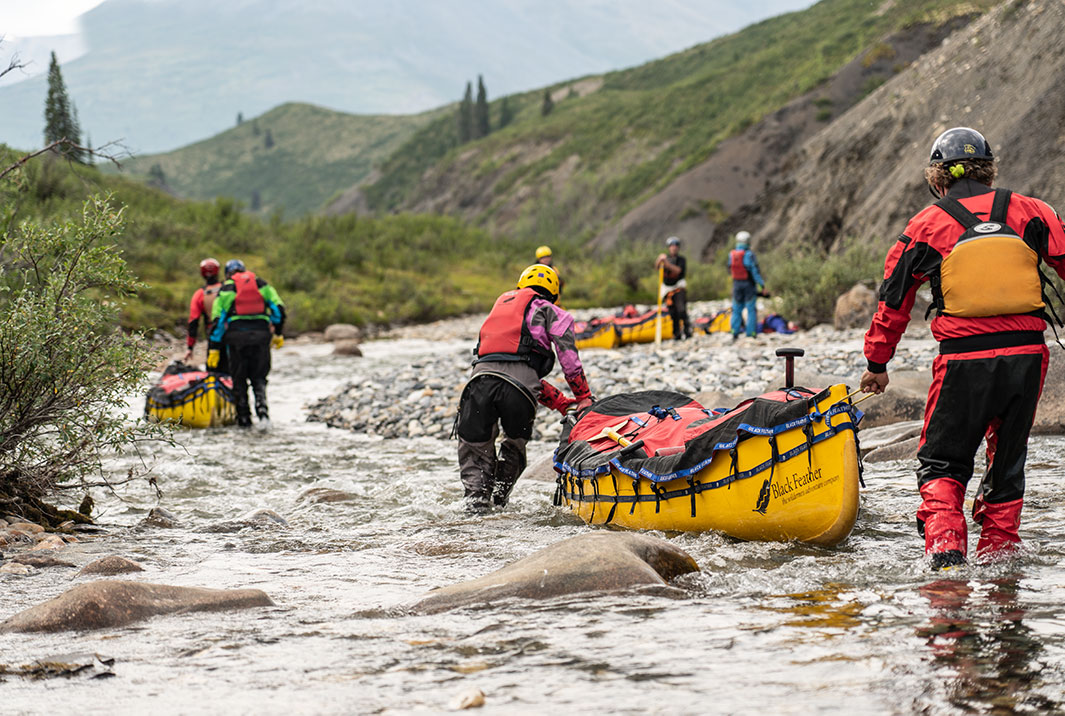
We all agree, dragging canoes over shallow gravel bars is better than carrying 10 days of food and gear on our backs. We shout the evening’s menu of Thai chicken, noodles and fresh salad down the line as encouragement to keep moving toward our second campsite on the gravel bar at the confluence of Swallow Creek, just above Swallow Falls.
In the morning, we have what we hope is our only portage of the entire trip—150 meters along a game trail—around Swallow Falls.
With the added water after Swallow Creek, we ride the current to a tight canyon where we paddle and line the technical Thank You Rapid just above the confluence where we are dumped into the cloudy blue waters of the Broken Skull proper.

Bordering the northern edge of the Nahanni National Park Reserve and reaching west to the Yukon border, Nááts’įhch’oh is Canada’s 44th national park. The 4,850-square-kilometer park is named for the looming 2,245-meter-tall mountain at the northern end of the park, part of the Mackenzie Mountain range.
The reserve was created to protect the land from encroaching industrialization and resource exploration, and was first meant to be an extension of Nahanni National Park Reserve. However, the Dene people in the Sahtu region lobbied Parks Canada to recognize their area of land differently from Nahanni, claimed by the Dene of the Dehcho region to the south.
Combined with the adjacent Nahanni National Park Reserve, the size of the two parks totals almost 35,000 square kilometers, making it the third-largest protected area in Parks Canada’s system. Together the two parks protect 86 percent of the South Nahanni Watershed.


Doug has been canoeing whitewater rivers his entire life. Dave, his grandad, has not. The rest of our group is a friendly cast of Black Feather trip alumni; all of them have done at least one other northern river, some had been on many whitewater canoe trips together. Listening to them sharing stories of adventures on the Mountain, Keele, Snake, Wind and Nahanni rivers is like opening a Black Feather brochure at a family reunion. They know all the same guides, have mutual friendships with other guests and remember the same favorite campsites and rapids.
It’s not every day a new wilderness river in the Canadian North opens for business, and so for some of these group members, they chose the Broken Skull simply because it was the one up here they hadn’t yet paddled. And it is another chance to be on a trip with their friend and Black Feather owner, Wendy Grater.
As the Broken Skull River becomes more popular and its reputation better known, I believe it will become one of the first rivers for new paddlers in the north, not the last.

Three rivers feed the South Nahanni River: Moose Ponds, Little Nahanni and the Broken Skull. An estimated 750 paddlers, between commercial and private trips, travel the Nahanni each year.
So, how did the Broken Skull go unnoticed for so long? It’s a combination of being relatively unheard of and being overshadowed by the iconic Nahanni, according to Black Feather’s Grater.
“Paddling past the confluence many times, I thought the Broken Skull would be really fun, but with the notoriety of the Nahanni, people hadn’t heard about it,” she says.
It wasn’t until Nááts’įhch’oh was officially designated a national park reserve in 2014 and the media coverage following the exploratory trip that any real hype developed about the secret tributary.
Black Feather now runs three to four trips a year on the Broken Skull with eight to 10 paddlers each. Nahanni River Adventures runs another commercial trip or two. Parks Canada is considering additional National Parks operator licenses for 2021. Even still, counting the occasional private trip, only 60 to 70 paddlers will likely ever descend the Broken Skull each year.

From the confluence of Swallow Creek, the Broken Skull is a swiftly moving river with only one marked class II+ rapid on the topographic maps. Let me say that differently. There is only one marked rapid, period. And it happens to be one of only two class II+ rapids. The rest of the Broken Skull is the perfect combination of swifts, class I and class II rapids meandering past braided inlets from feeder creeks, steep canyon walls and mountain scenery.
The whitewater on the Broken Skull is frequent, fun and not too freaking scary. Our group traded paddling partners taking turns in the bows and sterns of different canoes.
On the last day, Doug took to the stern to paddle his grandad the final section where the Broken Skull joins the South Nahanni River crossing from Nááts’įhch’oh National Park Reserve in the Sahtu Settlement Area to the Nahanni National Park Reserve.

Black Feather runs the 150-kilometer Broken Skull on a relaxing 11-day itinerary. The Parks Canada trip planner suggests a minimum of six days, which you could do, but why?
From our fourth campsite at the mouth of White Water Creek, we ferried across the Broken Skull for our second hike, a two-hour scramble to the top of Singing Water Mountain.
Before a mountain mid-summer storm of freezing rain forced us into our rain gear and back down the way we came, we took turns performing our silliest yoga poses for the cameras and marveled at being able to see Divide Lake still, three days back in the distance.
Black Feather’s recommended packing list for the August Broken Skull trip includes both a mandatory drysuit and a bathing suit. Despite being summer, the mountain-feed rivers still feel icy cold. While air temperatures can be as warm as 30 degrees Celsius, lows dip to freezing.
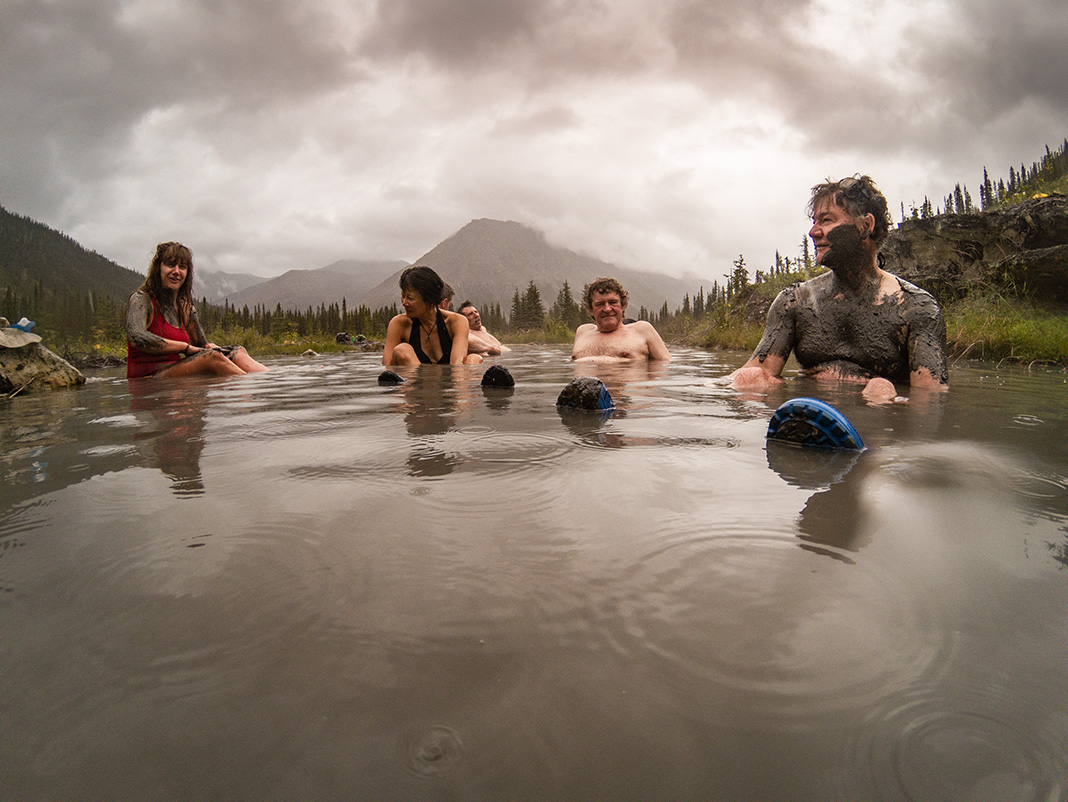
Our trip was cool and wet. Our bathing suits we reserved for the Broken Skull Hot Springs. And here lies one of the pure pleasures of guided wilderness travel.
At an unmarked and unremarkable gravel bar, lead guide Robbie Norton tied up our canoes and led us blindly 2.5 kilometers through dense, boggy boreal forest. No trail. Just the sweet promise of a remote arctic spa, three pools of varying temperatures and cleansing sulphuric mud.
Hot springs are sacred. These places of healing, they can lose their powers if they are not treated with respect. Elders tasked Parks Canada with learning more about the hot springs, so in 2017 Parks installed a wildlife camera and temperature gauges. Just FYI, in case you don’t think you need to pack a bathing suit. They say they delete all visitor photos.

What effect can you expect a northern river trip to have on you?
For Noatak’s Tip and Jim, after a lifetime of paddling rivers together, 74-year-old Tip said, “I don’t consider my life over yet. I have so many things I want to do, it would take me another whole lifetime to do them and then that probably wouldn’t be long enough.”
The 77-year-old Jim quotes a Vincent Millay poem, “My candle burns at both ends; it will not last the night; but ah, my foes, and oh, my friends—it gives a lovely light!”
For Dr. Martin Ray on the Broken Skull with his daughter, “It is the people who shared this trip with us that are the greatest gift and will leave lasting memories of compassion, humility, teamwork and the importance of family. Certainly, the best part of this trip for me was spending this precious time with Lauren.”
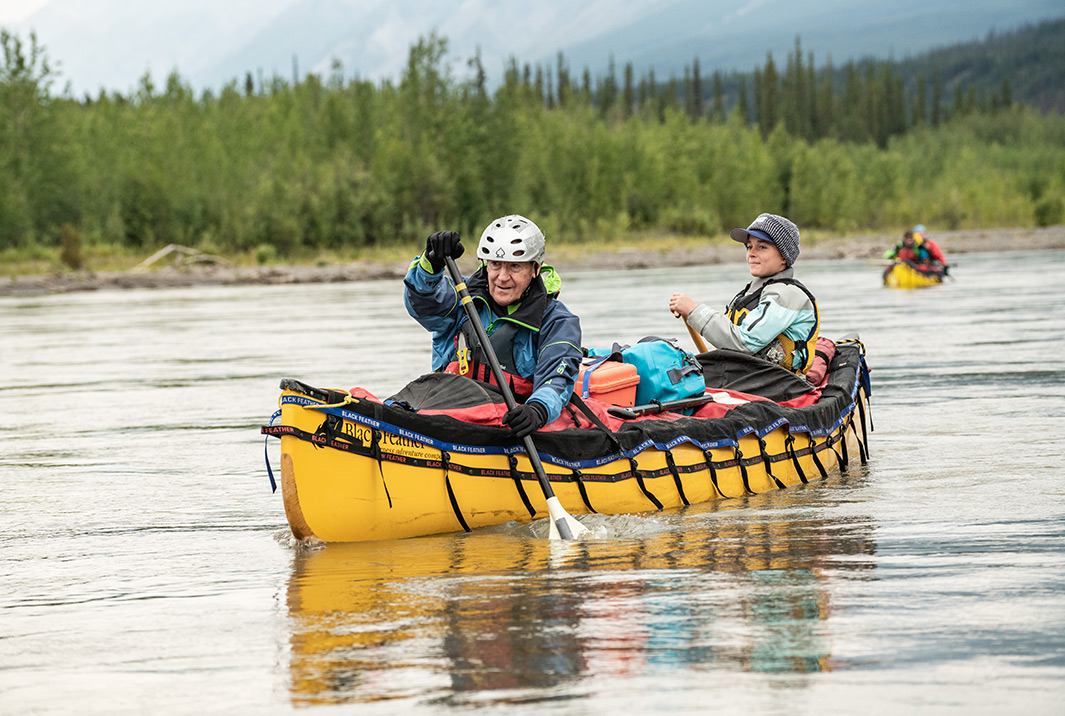
For Doug’s 74-year-old grandfather, Dave, it too was about the people, “My greatest joy is being here on this mountain river in this vast, beautiful land with my son-in-law and wonderful grandson. What could be better for an old guy like me?”
After Doug’s 11 days on the Broken Skull River in the Northwest Territories, like the rest of us, he was reluctant to go to sleep. Nobody wants the trip to end.
As our driftwood campfire on Rabbitkettle Lake crackles low, Doug asks if we think he should be a summer camp counselor, whitewater kayak instructor or wilderness canoe guide for Black Feather.
I tell him, “Yes.”
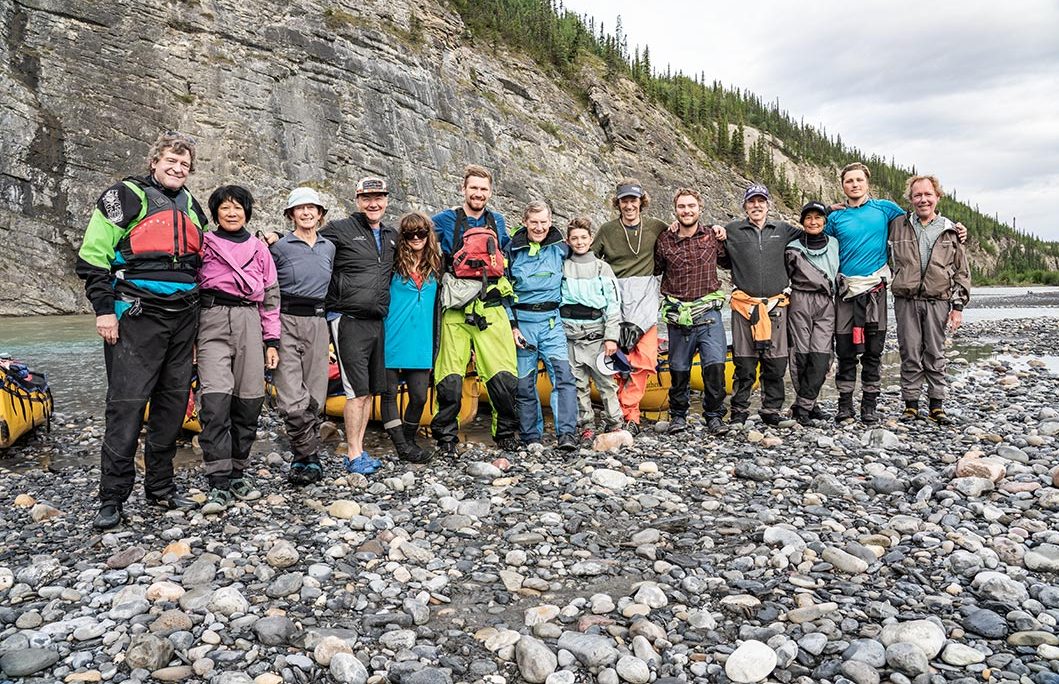
The group laughs and wonders how our lives would have turned out differently if we’d paddled the Broken Skull when we were 13 years old. No one speaks for a while. We are all wondering how our lives will turn out now, having been down the Broken Skull at this age.
Scott MacGregor is the publisher of Padding Magazine. This summer, Doug is enrolled in the Black Feather Apprentice Guide Training Program, he is a student counselor at Camp Wanakita, and he will be assistant teaching whitewater kayak courses at a local paddling school. His grandad is still telling anyone who will listen about his adventures with Doug on the Broken Skull.
Day four, or was it five, we paddle between the walls of Mini Gate. | Photo by: Scott MacGregor



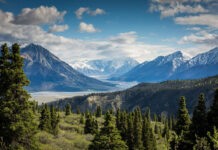
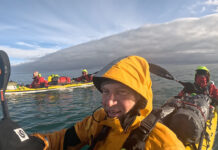
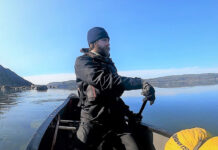
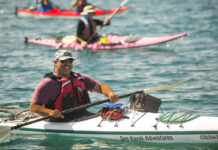


I believe it should be “Norman Wells” not “Normal Wells”. What a fantastic adventure for Doug and the others!